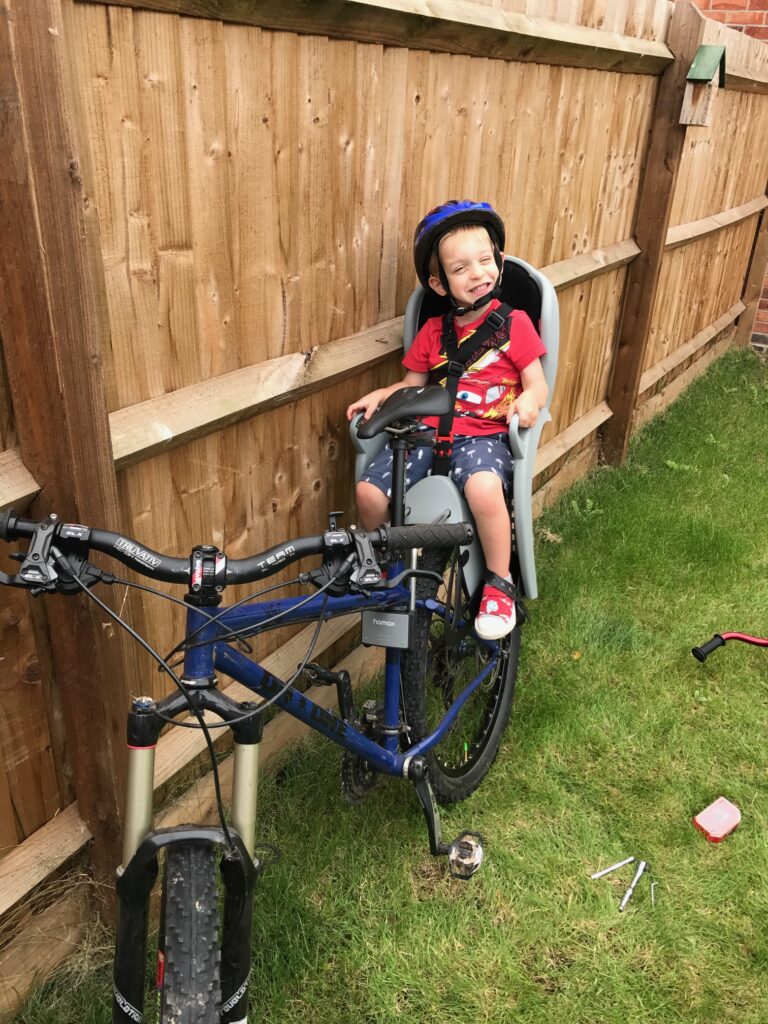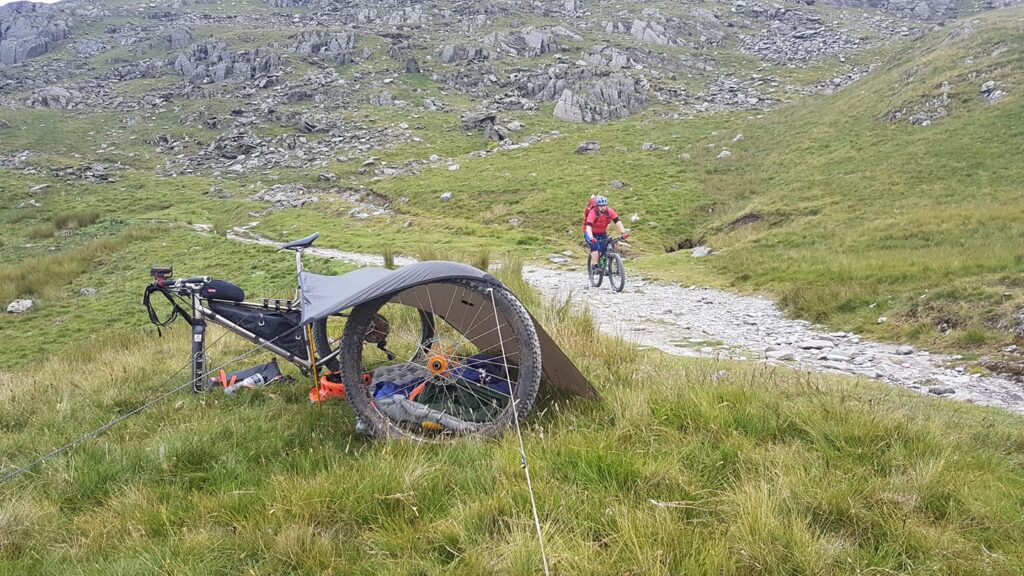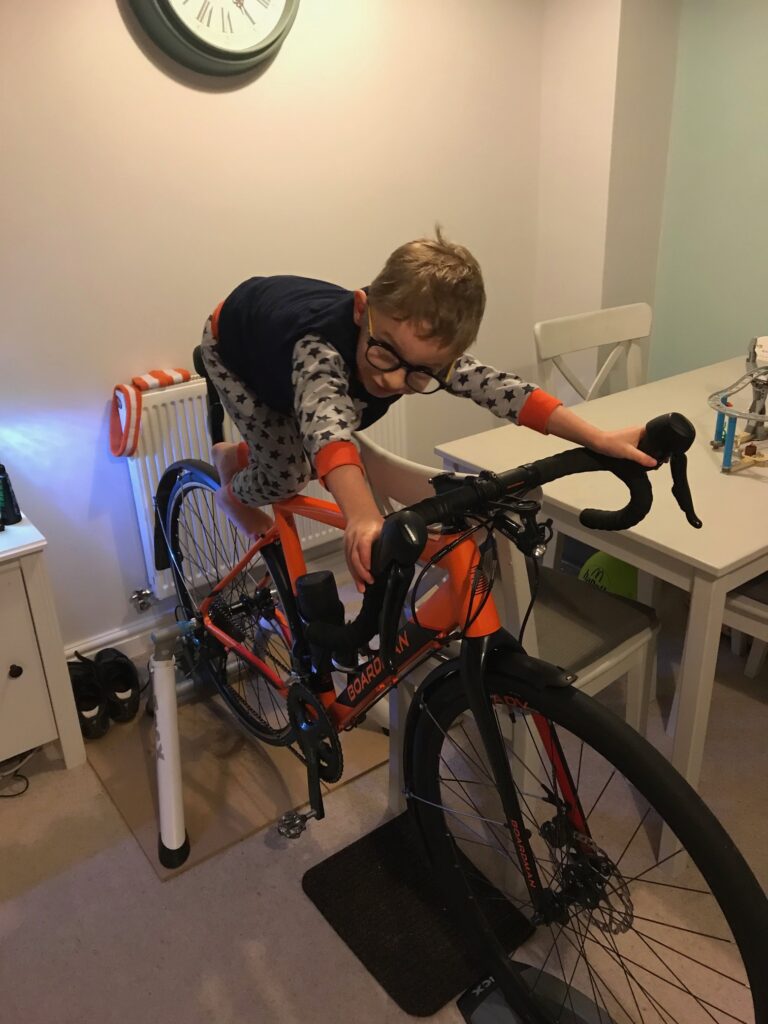Training for Bikepacking: How One Cyclist Used Low-Volume to Prepare for 100 Rugged Miles
Structured training is a helpful tool for every cycling discipline. Rob Belsom used TrainerRoad’s low-volume plan to prepare for a rugged 100-mile bikepacking event. Juggling work and family commitments, Rob has some tips for anyone seeking adventure through bikepacking.
Share your success story and tell us how TrainerRoad helped you reach your goals.
Key Takeaways
- Pick a training volume that lets you balance life and the bike.
- Complete the drills in the workouts. They’ll help improve your pedaling mechanics.
- Analyze your workout after to compare against past performances. Seeing your progress is motivational.
- Fuel during your workout. Not only does it make the workout easier, but it pays off during a long event.
Finding a Challenge in Cycling
Rob picked up cycling in 2008. He was riding twice a week when a move closer to the city caused riding to fall by the wayside. By 2014 with the birth of his son Jack, Rob was inundated with the responsibilities of his career while being a dad and husband. But in 2017, something changed, and Rob had a realization. He noticed that he “dedicated a lot of time being a dad, being a husband, and working, but it didn’t leave anything for me.”
While he was out shopping, Rob unexpectedly purchased a child’s bike carrier. He dug out the bike and rode for a few miles. But the ride wasn’t much fun because of Rob’s self-described “lack of fitness.” However, that ride provided something that was lacking. Rob found something relaxing that allowed him to forget about everything else.

Bikepacking Events
As Rob continued to ride, he got involved with self-supported bikepacking events. He signed up for the Jennride 50 in the Cotswolds region in South Central England. He started the event on a gravel bike, but the region known for its undulating terrain took its toll. Rob realized that his fitness wasn’t where it needed to be and abandoned after thirty miles.
Even though he didn’t finish, that first event was a learning opportunity in two ways. First, the event gave Rob a confidence boost for going on adventure rides. He signed up for another bikepacking event—a two-day ride with about 12,000 feet of climbing over 100 miles. The other key thing he realized was that he needed to increase his fitness.

Structured Training for Bikepacking
Before Rob’s second bikepacking event, the Jennride 100, he bought a trainer and began commuting by bike. There wasn’t any structure; it was just riding. Thinking that he just needed to ride more, Rob added to what he was already doing. But he soon realized that this was only digging a deeper hole and making himself more tired.
Adaptive Training
Get the right workout, every time with training that adapts to you.
Check Out TrainerRoadRob’s summer bikepacking ride was tough. The rarely flat route proved to be quiet a challenge, and his group decided to cut the route 10 miles short. Rob said that he cut the ride short because “the fitness wasn’t there.” When it was over, he was disappointed and discouraged. He said, “I thought I would be more fitter than I was, but the random riding didn’t really help me.” At first, Rob felt as though he wouldn’t want to enter an event again, but the spark came back.
Finding TrainerRoad
Soon after the summer bikepacking event, Rob had a four-hour drive for work and needed something to listen to in the car. He found the Ask a Cycling Coach podcast and decided to give TrainerRoad a try. Rob took his first Ramp Test, had a 225w FTP, and began with Sweet Spot Base I Low Volume.
One of the primary challenges in building fitness was Rob’s ability to express his FTP for sustained periods of time. Starting out, he couldn’t hold sweet spot power for more than ten minutes. But working through the plan’s progression, Rob starting knocking out twenty-minute sweet spot intervals.
Being able to hold a steady power helped with Rob’s outdoor rides. He knocked ten minutes off a local climb and even noticed that the technical parts were easier because he wasn’t fatigued. Being able to clean a technical section was a huge time saver, and restarting on a steep climb is difficult at best. Using a low-volume plan, Rob progressed over the next ten months from Sweet Spot Base I and II, then completed Rolling Road Race Build. He raised his FTP to 284w and has used Plan Builder to start training for next year.
Bikepacking Training Tips
Analyze Your Workout
During his training, Rob discovered some things that helped him overcome obstacles. As a design engineer, Rob appreciates a data-driven approach. So he used the Ride Notes feature and started recording how the workout felt, nutrition information, and what was working. Rob would also analyze the ride afterward. He’d look at past workouts he had done more than once to see his progress—higher power and lower heart rate. Seeing his hard work pay off was highly motivating.
Complete the Drills
Many TrainerRoad workouts feature pedaling drills, which Rob was a bit skeptical about at first. He said, “You think, are these really useful, but they show up outside, especially on technical climbs.” The drills helped Rob expand his cadence range, and instead of grinding at 80 rpm, he now spins at 95 rpm.
Find Another Workout
Sometimes life gets in the way of training, and sometimes you have some extra time. Rob suggests looking at the workout variants to find the same type of workout, but one that’s shorter or longer. Choosing a -1 version means that you still get the work you need to progress your fitness.
Fuel The Work
Bikepacking events are long, and you’re going to get hungry. Rob found that eating during the workouts helped train his GI system for those long rides. He typically would take in a sports drink during the shorter workouts and would eat gels during the longer ones. Not only did this make the training feel easier, but he learned what worked best for him.
Balancing Life and Training
Finding the balance point between the demands of life and training can be a challenge. With a demanding job and a six-year-old son, Rob had to find a way to fit in his training. At first, that meant training at five o’clock in the morning. Recently he’s been able to work from home, which helps in finding time to train. His son Jack has even gotten involved with his training.
During a tough interval, Jack will come over and take a look at the screen and give his dad some encouragement. Sometimes, he’ll read the workout instructions and give Rob some chocolate or sweets. Rob said, “I think him being interested in what I am doing and why helps to motivate me and hopefully to challenge himself in the future.”

Life and training are linked together for Rob. Training has increased his confidence off-the-bike, and he’s seen a massive difference. He received a promotion at work and attributed that to the confidence gained from cycling. He said, “I feel that I am more outgoing and confident in my communication with other people, which is reflected in the fact that I agreed to do the podcast. That definitely wouldn’t have happened a year ago!” You can connect with Rob in the TrainerRoad forum and on Instagram.
Tell us your story. Success isn’t always a race win. It can be life-changing health improvements, reaching a personal goal, or more.
For more cycling training knowledge, listen to Ask a Cycling Coach — the only podcast dedicated to making you a faster cyclist. New episodes are released weekly.
